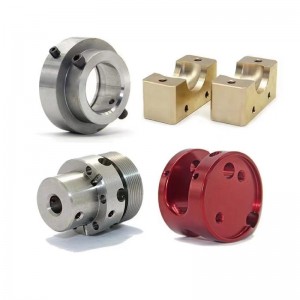Anodizing is among the most common post-processing operations performed on aluminum parts. It is an electrochemical process that involves immersing an aluminum part in a series of tanks, converting the aluminum surface into a durable and corrosion-resistant finish.
To determine whether anodizing is the right choice for a specific part, product designers must first understand how it affects aluminum’s strength, thickness, color, and thermal conductivity.
1. How does Anodizing Work?
The anodizing process involves dipping and treating a clean aluminum part into an electrolyte chemical bath. This chemical bath is typically made of sulfuric or chromic acid (an electrically conductive solution).
Next, a direct electric current is applied to this chemical bath, creating a positive electric charge on the aluminum part and a negative charge in the electrolyte plates. The resulting electrochemical reaction creates pores on the surface of the part. These pores bond with the negatively charged O₂ ions in the electrolyte to form a cellular oxide layer (aluminum oxide) on the component.
This aluminum oxide layer is more durable and corrosion-resistant than the underlying aluminum substrate. However, almost every aluminum part naturally creates an aluminum oxide layer when exposed to the atmosphere. So what makes the anodizing process unique, and why should you go through the hassle of achieving something that pretty much occurs naturally?
2. Why Anodize Aluminum Parts?
When you expose a regular aluminum part to the atmosphere, an aluminum oxide layer is formed over the part’s surface. However, this layer is usually very thin and can easily wear off, especially when you scratch it or use it in areas with polluted air.
However, unlike regular aluminum, an anodized aluminum part has its aluminum oxide deep within the aluminum substrate. For instance, the pores (and cellular oxide layer) formed in the electrochemical reaction can reach up to 25 microns. As a result, you’d have an aluminum component that is corrosion-resistant, scratch-resistant, and can withstand almost any chemical attack.
3. Does Anodizing Make Aluminum Parts Stronger?
Anodizing doesn’t make an aluminum component stronger or weaker. Instead, it increases aluminum’s hardnessㅡwhich describes the resistance of the aluminum component to surface indentation, scratching, or abrasion. For instance, an anodized aluminum component can be three times harder than the original aluminum alloy.
In addition, anodized aluminum parts are typically lighter than other metals like copper and stainless steel. This unique characteristic makes them ideal for aerospace applications that require lightweight metals.
4. Does Anodizing Improve Thermal Conductivity of Aluminum?
Thermal conductivity describes the ability of a material to transfer or conduct heat. This ability increases with the amount of heat flow, material thickness, and surface area of the material.
Because anodizing forms an additional oxide layer on the surface of an aluminum component, you’d agree that it increases the thickness and surface area of the component. As a result, the anodized aluminum will have improved thermal conductivity than an unfinished aluminum component. This makes anodized aluminum parts ideal for today’s heat sink applications found in electronics and other thermal systems.
5. What are the Types of Anodizing?
Anodizing is commonly classified according to the MIL-A-8625 standard into three types:
- Type I Anodizing
- Type II Anodizing
- Type III Anodizing
The Type I anodizing process, also called chromic acid anodizing, uses a chromic acid chemical bath to create coatings (or oxide layer) on the aluminum surface. It produces a thin coating (up to 2.5 microns) and is ideal in applications where you require minimal corrosion protection and paint adhesion.
The Type II anodizing process uses a sulfuric acid chemical bath to create an oxide layer on the aluminum component. This anodizing type produces an oxide layer as thick as 25 microns, making them more corrosion resistant than Type I anodized aluminum parts. In addition, because they have thicker oxide layers (and pores), they are better at retaining dyes and coloring than “Type I” anodized parts.
The Type III anodizing process, also called hard-coat anodizing, produces oxide layers thicker than 25 microns. It uses sulfuric acid as a chemical bath, like the Type II anodizing. However, the electric current in this process is made to flow for longer periods than in Type II anodizing. This allows them to produce thicker layers and makes them more corrosion-resistant than Type I and Type II anodized parts.
Anodizing of aluminum alloys. Shenzhen Xinsheng Precision Hardware Machinery Co., Ltd. can help.
As you can see from this article, the anodizing process is not as simple as it seems: it requires special skills and expertise.
Our company is a leading provider of high-quality manufacturing services throughout Asia. Not only do we manufacture products with precision using state-of-the-art CNC machining technology, but we also offer a wide range of surface treatment services, including aluminum anodizing.
Come and find out more about our surface treatment services. We look forward to doing business with you in the future.
Post time: Mar-08-2023







